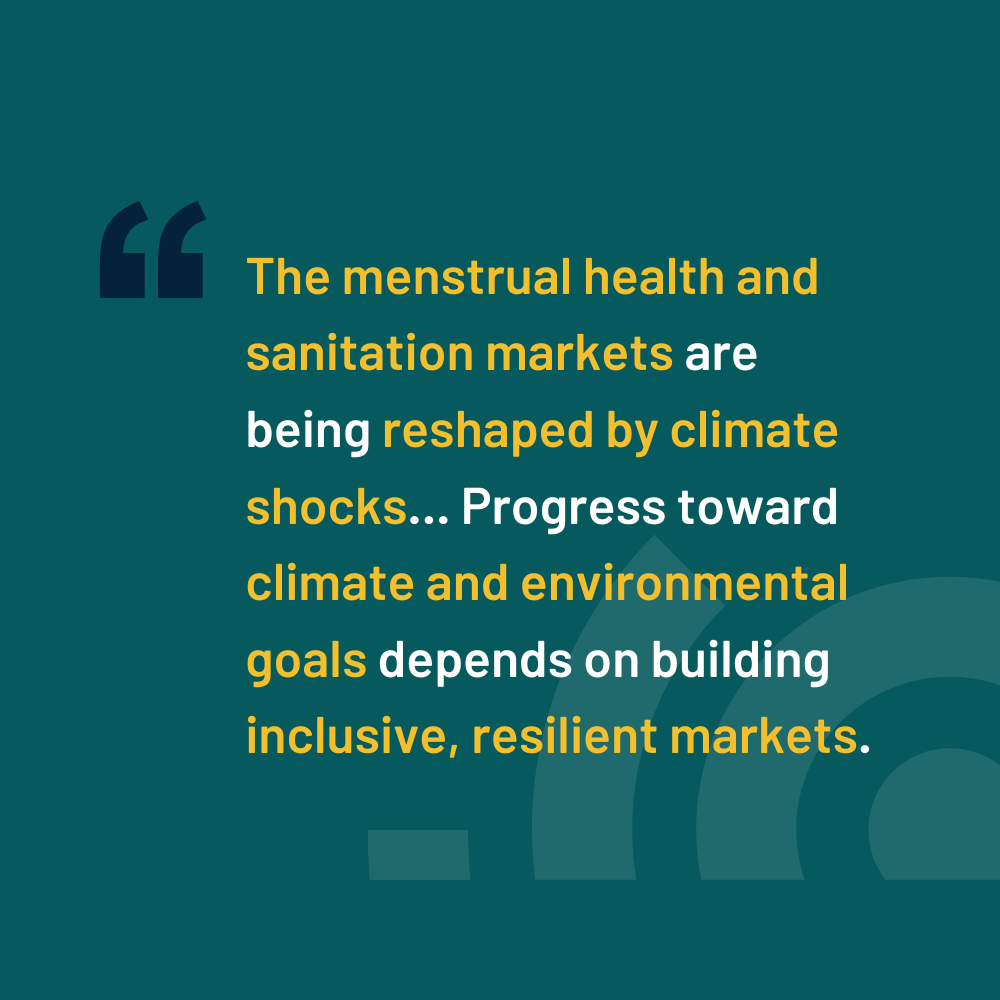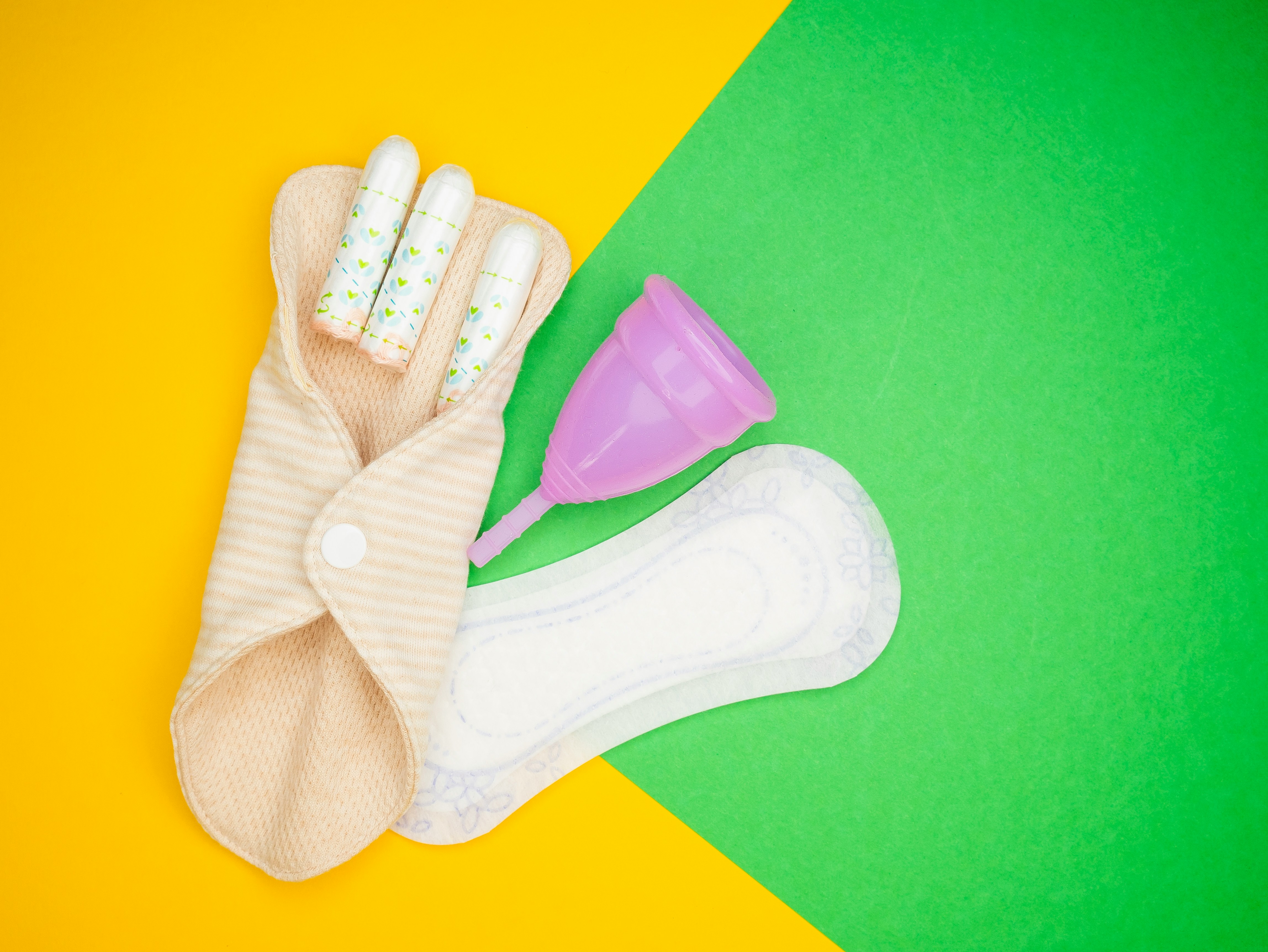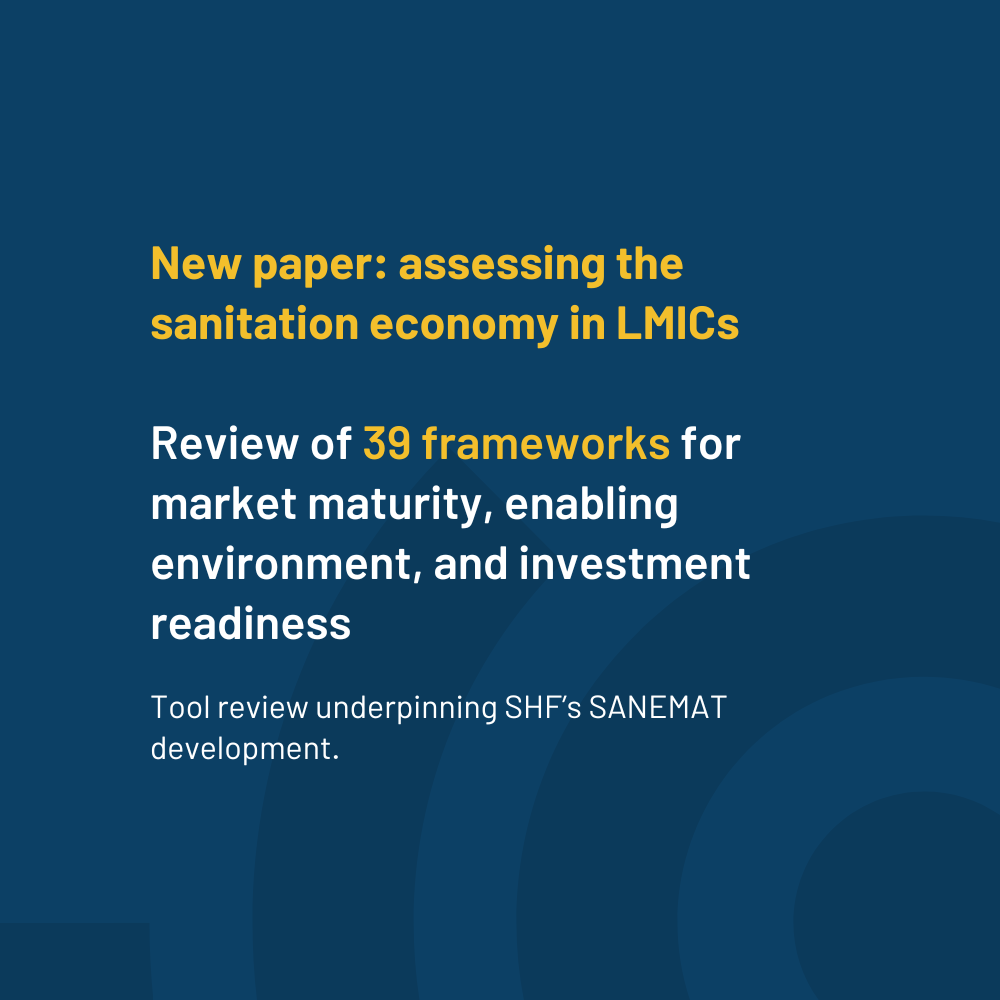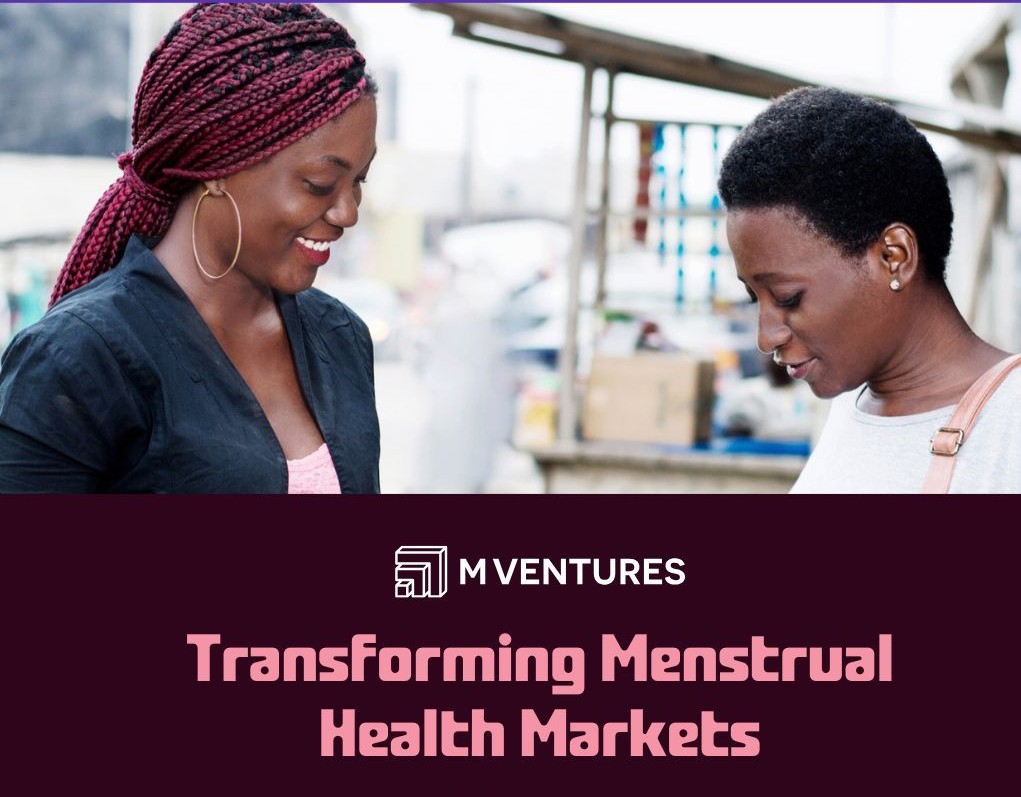
“Look beyond the pad” and other investment insights with Wendy Anderson

As SHF looks to catalyze investments in sanitation economies and the menstrual health market, we sat down with our new board member, Wendy Anderson, co-founder and investing partner at The Case for Her, a blended finance portfolio addressing key women’s health issues, on her experience and learnings from a decade of investing in menstrual health and hygiene (MHH).
Could you share a little bit about your background and your motivation to venture as investor into women’s health?
I have a professional background in trading technologies. I started my career as a trade input operator on the equities floor of the Toronto Stock Exchange, and by the time I was done, I’d worked with some of the world’s largest equity, derivatives and commodities trading systems, with a keen appreciation of the volume of capital moving globally on a daily basis.
About 15 years ago, my husband and I had young children at home, and alongside work were managing a family foundation focused on the education of women and girls by building schools and outfitting classrooms through grants to projects in several African countries. After visiting a few of the completed projects, we were eager to understand the underlying factors that determined whether a project thrived, or not. We were also inspired by new models of philanthropy – like Acumen’s Patient Capital model, which deploys philanthropic funds to high-impact social enterprises for the purpose of building markets and reducing risk for follow-on investors.
Around the same time, I was introduced to Cristina Ljungberg starting out on her own philanthropic journey. With similar approaches and complementary skill sets, we quickly realized the value that larger-scale alignment of our time and foundations could have. In 2017, we co-founded The Case for Her, a blended-finance investment portfolio addressing opportunities in menstruation, female sexual wellness and medication abortion access.
The focus on women’s health was simply a given - we believe in an equal world where women and girls thrive, and by investing in key women’s health issues that have been long underfunded and overlooked we have an unprecedented opportunity to break open gender inequality.
What trends have you noticed as an investor in women’s health since the start of your own journey, and what outlook do you foresee for the sector?
Closing the gender health gap is a 1 trillion dollar missed opportunity (McKinsey Health Institute, 2024) and we have a long way to go, but I’ve definitely seen an increase in products and services being offered, and an increased growth of both Venture Capital (VC) and private investors in the space.
We’re entering a period where women are stepping into capital - we’re living longer, earning and inheriting capital at increased levels - and women are more likely to invest that capital in products and services that speak to their needs. And with social media and other platforms hosting influencers breaking open formerly stigmatized female health topics like painful intimacy, menopause and menstruation, women are becoming informed users who will in turn demand products and services that fill those demands.
Lagging behind is research funding – but that will come. We need more government funding of women’s health research, but as demand grows, that money will also follow. Because taking a holistic approach to women’s health can offer considerable economic returns to both the public and private sectors.
When it comes to MHH specifically, what has been your experience and/or learnings?
After years granting and investing in the sector, I’ve learned a lot! We took the time to share these learnings in our report “Lessons Learned from a Decade of Investing in Global Menstrual Health”.
In short: To effectively address MHH at scale, we need to fund across the MHH ecosystem, starting with foundational aspects like sexual and reproductive health education that includes MHH from an early age; public service campaigns that address stigma; capacity building for local and national governments that includes monitoring and evaluation (M&E), policy and consumer product standards; funded mandates for organizations and institutions so that they can apply an MHH lens to existing and future programmes; and most critically: provide access to capital that’s responsive to the user, not the donor.
By all means possible, provide products and services to those who have immediate needs. But the urge to address MHH entirely as a product-first or product-only issue is not only inefficient, but it belies the deeper gender inequalities that are the root cause of menstrual stigma and the state of MHH as it is today.
Give a girl a disposable pad, and you may improve her level of comfort for up to 4 hours. Give a girl the opportunity to walk into a marketplace, select her own period product of choice and quality, pay a reasonable price for it and walk out with dignity and security, and you’ve created a world where she may thrive.

If the investment case for MHH is so compelling, why in your view has funding not been forthcoming so far?
There are many reasons for this in my view:
- Taboos and Stigma: Social discomfort around menstruation has led to it being considered a "private" or "unimportant" issue by many decision-makers, including policymakers and investors. This has limited open discussions and advocacy, resulting in less visibility and fewer opportunities for funding.
- Gender bias in investing: Many decision-making spaces, particularly in VC and government funding, are dominated by men who may not fully understand or prioritize MHH. As a result, menstrual products and innovations are often overlooked in favor of areas perceived as more lucrative or aligned with traditional business interests.
- Misconception of Impact: MHH is often viewed as a "niche" issue rather than one that affects half the global population, for over 35 years of their lives (and with growing markets in geographies where young populations are expanding). Investors may fail to see the broader economic and social impacts of MHH, such as improved education outcomes for girls, increased workforce participation, and enhanced public health. This narrow perspective diminishes its perceived value as an investment.
- Lack of Data: While the case for investment in MHH is strong, there has historically been a lack of comprehensive data to quantify its potential returns, especially in economic terms. Without clear evidence of the financial benefits, investors may hesitate to back initiatives that seem less immediately profitable.
- Fragmented Market and Innovation: The MHH space, though growing, remains fragmented, with many small or localized initiatives rather than large-scale, coordinated efforts. Investors typically prefer opportunities that show scalability and broad market penetration, which has limited funding for smaller projects that could still have significant social impact.
- Competing Priorities in Global Health: Global health funding often focuses on more visible or urgent issues such as infectious diseases, maternal health, or malnutrition. MHH, although crucial for well-being and gender equality, may be perceived as a secondary priority.
- Policy and Structural Barriers: In some regions, there are insufficient government policies or incentives to prioritize MHH. Without strong policy frameworks that recognize MHH as essential to public health, education, and economic growth, large-scale funding is harder to secure.
Tackling these barriers requires a multi-pronged approach involving advocacy, public education, better data collection, and the engagement of diverse stakeholders, including governments, corporations, and investors. As awareness grows, the investment landscape for MHH may become more promising and we see evidence of this already, but we need more, faster.
How can we change the trajectory of investment in MHH, and what role do you see for SHF in particular?
Changing the trajectory of investment in MHH requires a coordinated effort across multiple fronts to raise awareness, reduce stigma, and demonstrate the clear economic and social returns of investing in this space. I also see a need for a shift in how MHH funding is viewed - away from scattered shorter-term projects and towards a national, consolidated infrastructure ‘package’ that includes a multifaceted systematic implementation plan and long-term ROI expectations.
The UN’s Sanitation and Hygiene Fund (SHF) can help unlock the significant potential of MHH as a driver of social and economic development. Leveraging its global platform, SHF can amplify the message that MHH is essential for achieving broader development goals like the Sustainable Development Goals (SDGs), and leverage partnerships with government, donors and private sector to develop and pilot creative financing mechanisms and market development strategies to test market-based methodology and derisk menstrual health for follow-on funders.
If you could share one message with investors looking at MHH as an opportunity, what would it be?
Look beyond the pad.
Philanthropic capital can be catalytic in building the infrastructure needed for successful ventures: look at what the system is lacking, find partners and start there, or get comfortable with granting funds to social businesses for capacity, growth or market-research projects.
If you’re an investor that is comfortable with risk: offer fast, flexible working-capital loans at friendly rates to Small and Medium-Sized Enterprises (SMEs).
If you’re a large NGO or bilateral: mandate a dedicated MHH role with capacity to apply an MHH lens to current and future programmes at key intersectional points.
If you’re a government: dedicate funding to national MHH programmes including products, services and curricula; build capacity in tracking evidence and outcomes and support bilateral programmes addressing MHH intentionally and internationally.



